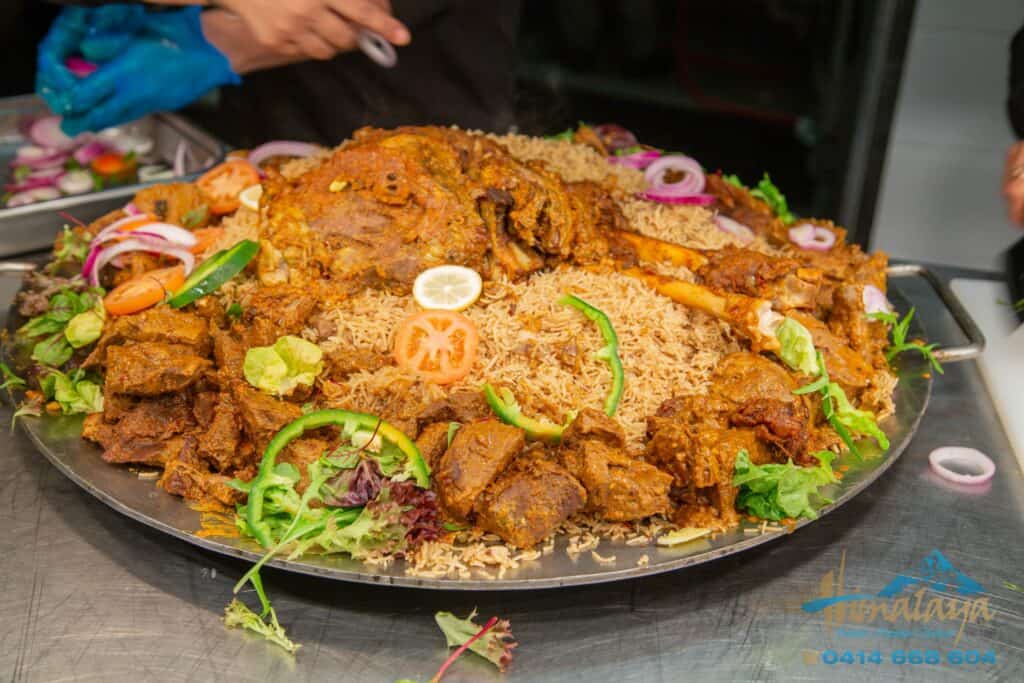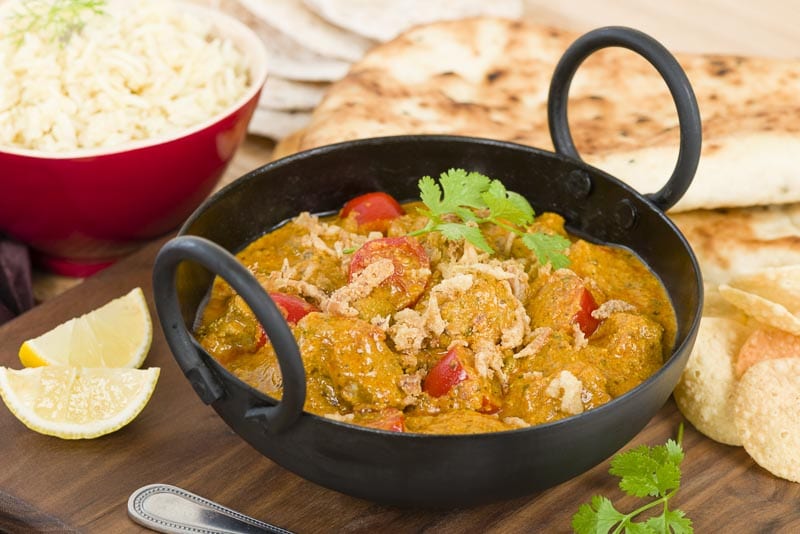Imagine breaking your fast with a delightful spread of Pakistani cuisine, a perfect blend of tradition and flavour. From refreshing drinks and appetizers to mouthwatering main courses, the Pakistani Iftar menu offers a culinary journey like no other. Join us as we explore the colourful and delicious world of Iftar, where every dish is a celebration of taste and culture.
Key Takeaways
Dive into the captivating flavours of Pakistani Iftar with delectable slow cooked dishes like Biryani, Haleem and Nihari!
Delight in savoury snacks like Pakoras and Samosas, plus delicious side dishes such as Raita & Chutneys.
Indulge in sweet treats from Sheer Khurma to Gajar ka Halwa for an unforgettable gastronomic journey!
Iftar Essentials: Drinks and Appetizers
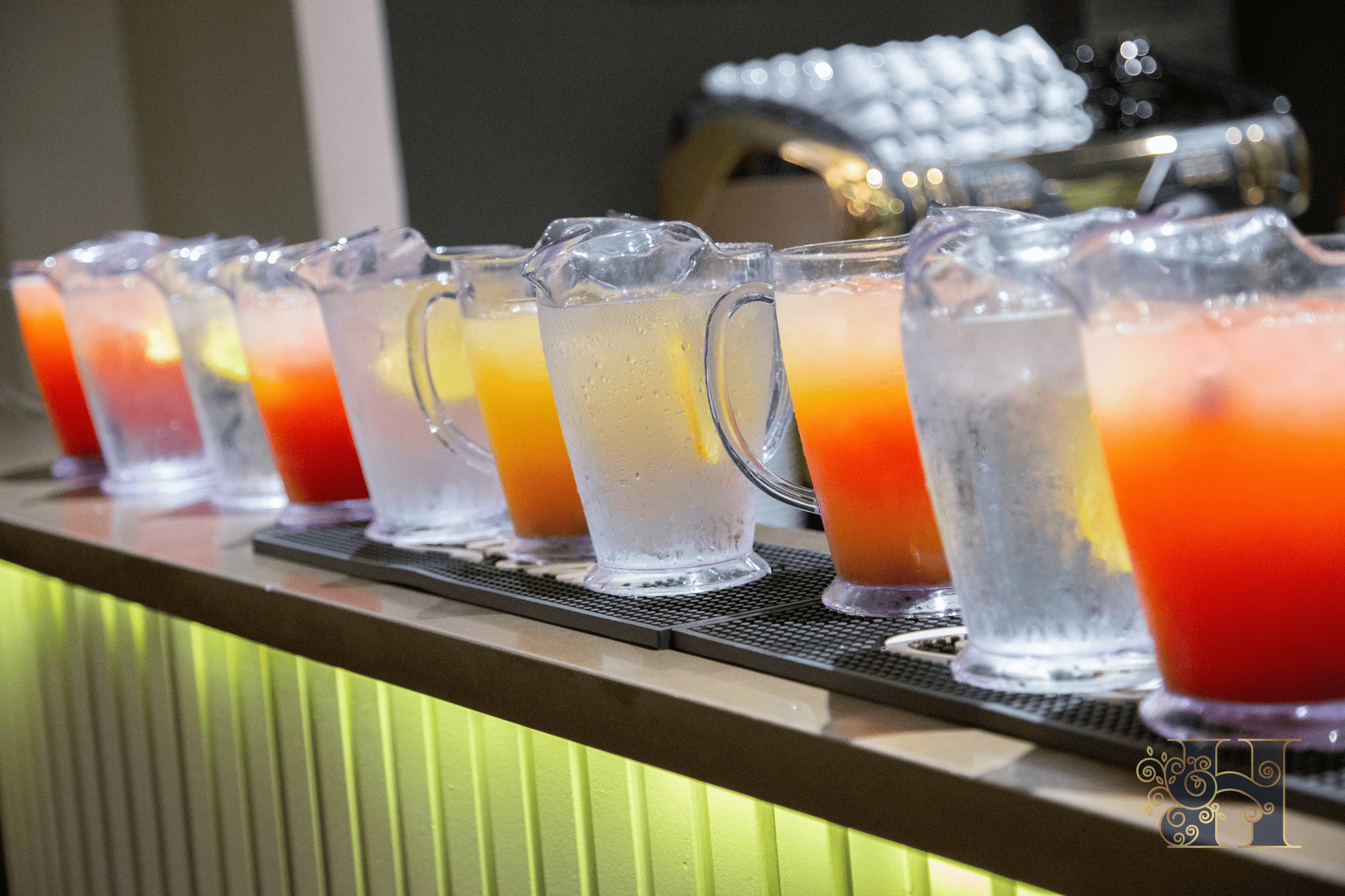
Drinks and appetizers shape a complete Iftar experience in Pakistani cuisine. They provide a refreshing break from the heavy meal, which may include dishes made with minced beef, and help to balance out the flavours. The most popular drinks served during Iftar are Rooh Afza, Lassi, and Dahi bada. These beverages are perfect to accompany chicken dishes in a traditional Pakistani Iftar menu.
Badam kheer is a delicious dessert made from ground almonds, milk, and sugar, typically flavoured with cardamom and saffron, is a popular dish in Pakistani food. Methi Lassi, a yogurt-based drink blended with spices or mango, is another exciting option to enjoy alongside Pakistani cuisine during Iftar. Lassi, made famous by Punjabi farmers, can be a great accompaniment to desserts made with sugar syrup. The diverse selection of drinks during Iftar contributes to a fulfilling and thrilling culinary journey.
Savoury Snacks: Pakoras, Samosas, and More
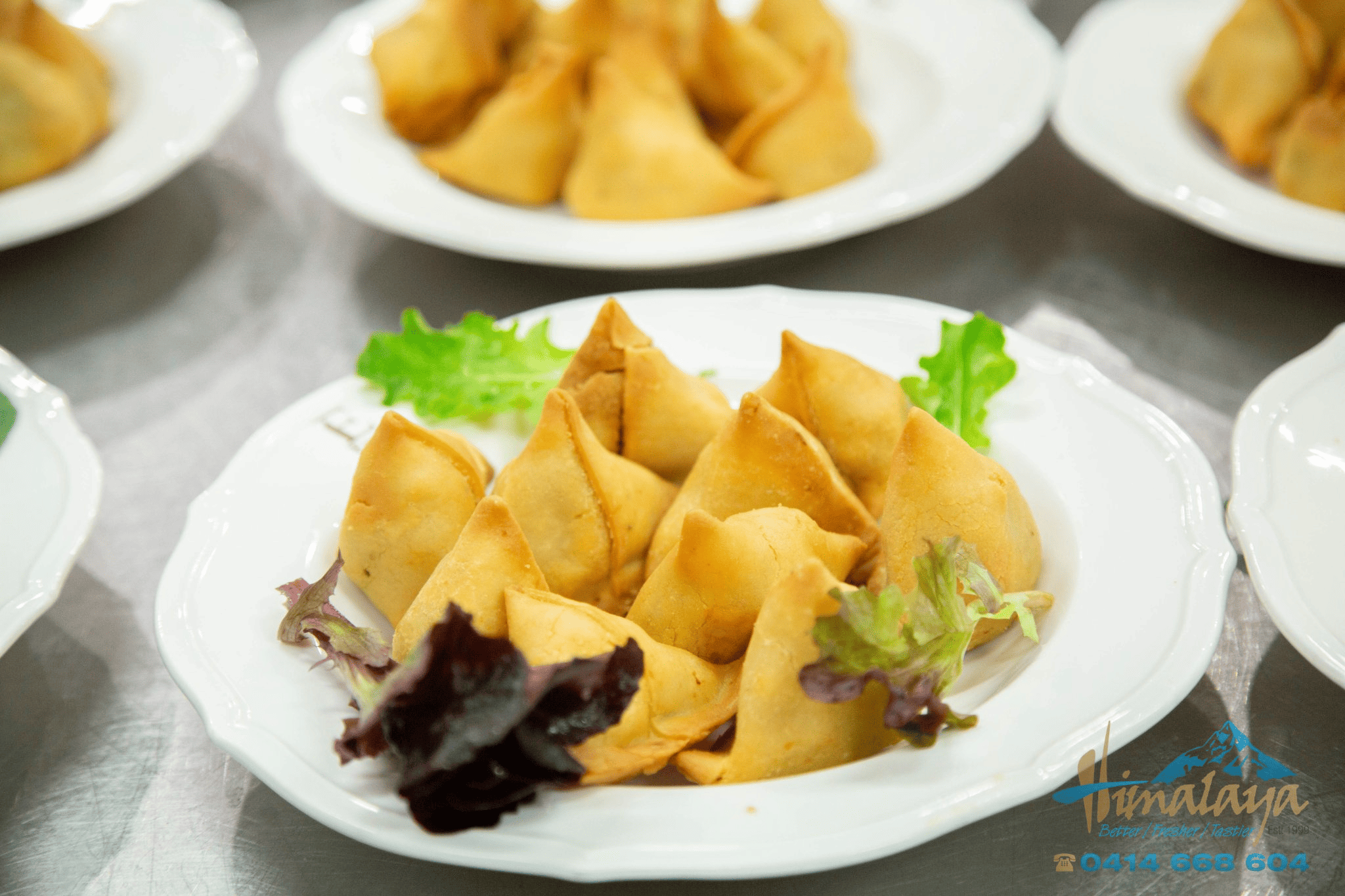
Pakistani Iftar is incomplete without the delectable array of savoury snacks like most famous dishes like Pakoras, Samosas, Aloo Tikki, Fried Chicken, Shami Kebabs and more. These mouthwatering snacks are ideal for ending the fast and placating hunger pangs. Samosas, for instance, are a popular Pakistani dish enjoyed by many during the month of Ramadan to break the daily fast, otherwise known as Iftar along with dates.
From the spicy potato or vegetable-filled samosas in the eastern and southern regions to the less spicy minced meat samosas in the western and northern parts of Pakistan, there’s a samosa for every palate.
Conversely, Mix Pakoras – deep-fried fritters made with besan, potatoes, and vegetables – are a popular snack accompanying a cup of chai on rainy days and a preferred choice during Ramadan’s Iftar.
Pakoras
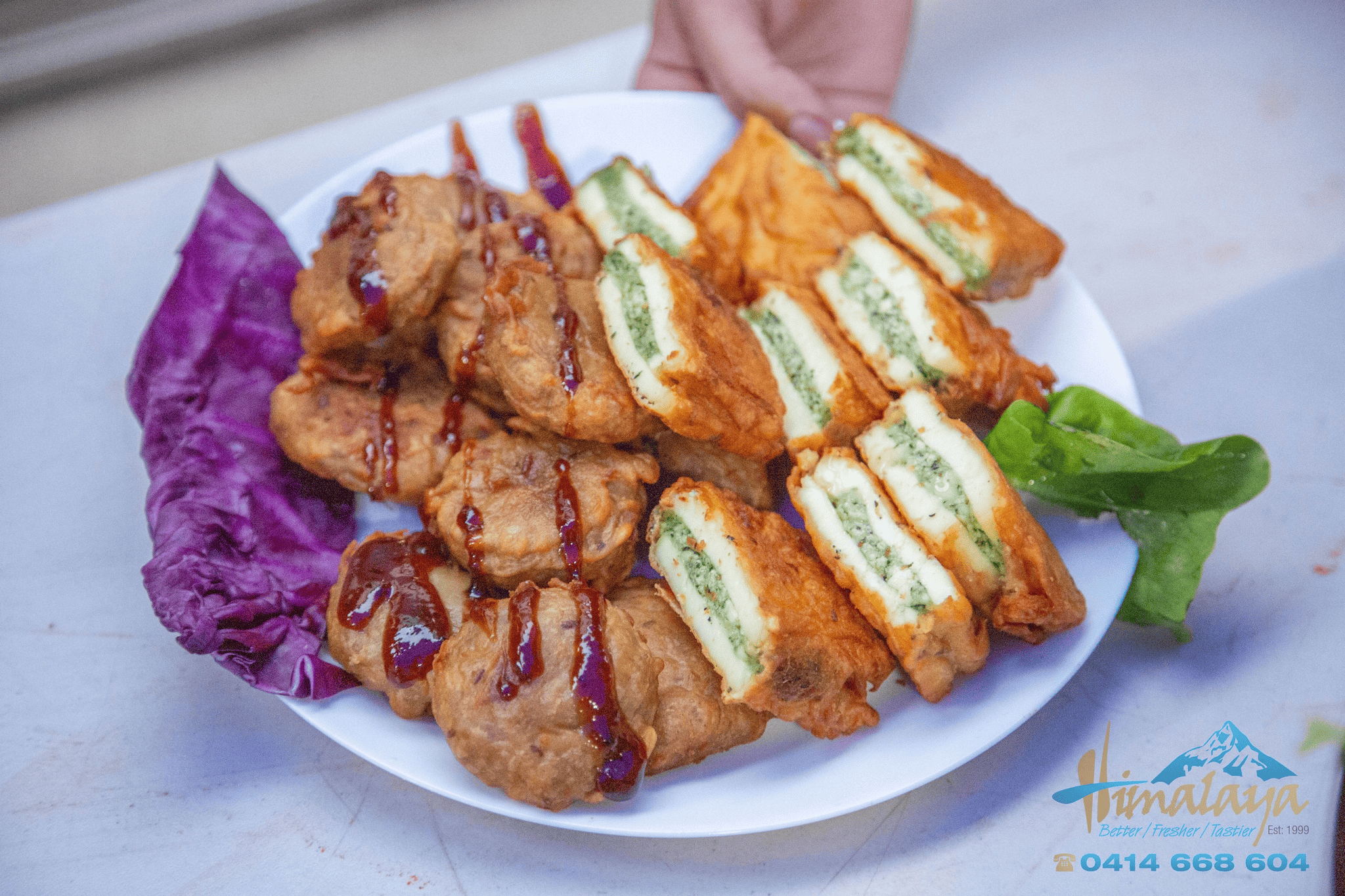
Pakoras, a staple in Pakistani cooking, are incredibly significant in Ramadan. These calorie-rich snacks satisfy hunger during the fast and are enjoyed as a traditional and festive food, especially during the monsoon season. Pakoras are typically made with chickpea or gram flour, vegetables such as potatoes, onions, and spinach, and spices such as cumin, coriander, and chili powder.
The preparation of pakoras involves amalgamating the ingredients into a batter, subsequently deep-fried in oil until it achieves a golden brown hue. The result is a delicious and crispy fritter that can be enjoyed with a variety of dishes, including Pakistani rice pudding.
The versatility of pakoras allows for endless variations in ingredients and flavours, making them a perfect treat for every taste bud during Iftar. Enjoy them with dishes cooked in a tandoor oven and experience the delightful combination of textures and flavours.
Samosas
Samosas, delicious triangular pastries filled with spiced potatoes, peas, or meat, have a rich history that dates back to the ancient empires of the Iranian plateau. They were mentioned in Persian literature as ‘sanbosag’ and later made their way to India with the arrival of the Mughals.
Different cooking methods for samosas include frying, baking, and shallow frying. To fold a samosa properly, follow these steps: cut the round pastry into a semi-circle, fold the semi-circle into a cone shape, stuff the samosa with your desired filling, seal the edges of the cone by applying water or flour paste, and deep fry the samosa until golden brown. The result is a crispy, flavourful pastry that’s perfect for Iftar.
Reflecting regional variations in Pakistan, samosas range from spicier versions in the east and south, to less spicy, minced meat-filled alternatives in the west and north, thus appealing to diverse flavour profiles. These delightful pastries are an essential part of any Iftar menu and are sure to be a crowd-pleaser.
Aloo Tikki
Aloo Tikki, a popular street food in Pakistan and other parts of South Asia, is made from boiled potatoes, peas, and various curry spices. This delicious potato patty is traditionally prepared for Iftar by mixing mashed potatoes, onions, herbs, and spices, shaping them into patties, and frying them until golden brown.
The exciting variations of Aloo Tikki recipes throughout Pakistan include different ingredients used for the filling, such as onions, herbs, and spices, as well as variations in the spices and seasonings used to flavour the potato cakes. This appetizing potato-centric snack, typically accompanied by chutneys and yogurt, enriches the Iftar table with additional flavour and texture.
Hearty Main Courses: Biryani, Haleem, and Nihari
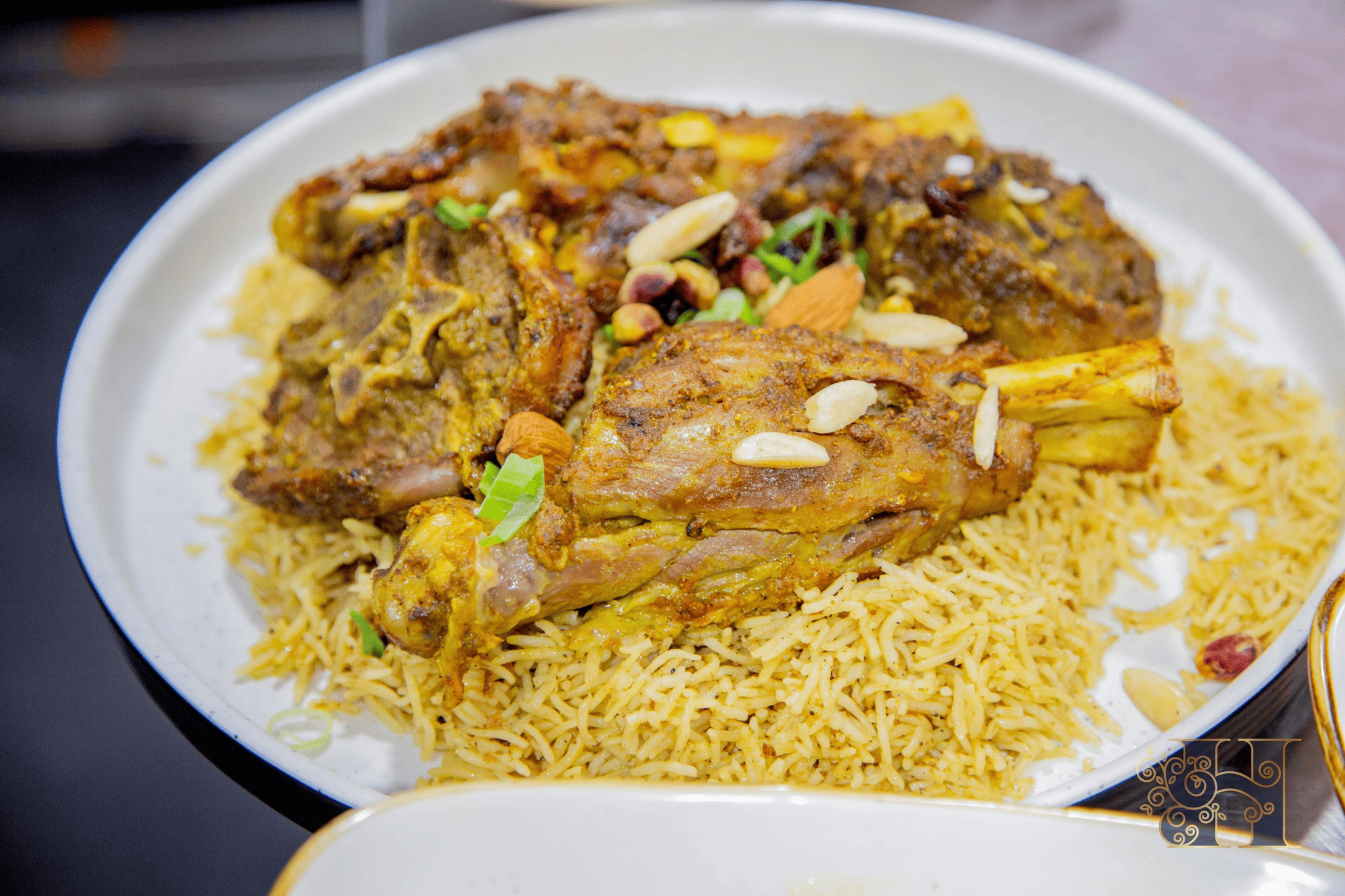
As the stars of the Iftar menu, Biryani, Haleem, and Nihari showcase the rich flavours of Pakistani main courses. Here’s a closer look at each dish:
Biryani: A delicious rice dish made with spices, meat, and vegetables.
Chicken Haleem: An amazing stew made with wheat, barley, and meat.
Nihari: A mouthwatering stew made with slow-cooked meat and spices.
These main courses, frequently the stars of an Iftar meal, present a distinctive and gratifying gastronomic experience. From the fragrant and flavourful Biryani, the soothing and hearty Haleem, to the rich and tender Nihari, these famous dishes deliver not only taste but also crucial nutrients and energy required post a day of fasting.
Biryani
Originating from Persia, Biryani has made its mark as a beloved dish across the Indian subcontinent. This aromatic rice dish is traditionally prepared in Pakistan by layering basmati rice with a spicy chicken korma, creating a flavourful and aromatic dish. The korma is made with:
boneless chicken pieces
onions
garlic
a blend of spices
The rice is cooked separately and then layered with the chicken marinated in yoghurt and other aromatic spices. There are regional variations of Biryani in Pakistan, including Sindhi Biryani, Punjabi Biryani, and Bohri Biryani. Each variation has its own unique preparation method and flavour profile.
Haleem
Haleem is an Middle-eastern dish that is popular in many countries across the world, such as:
Pakistan
India
Afghanistan
Turkey
Uzbekistan
Armenia
Variations of this dish can be found in each of these countries. This slow-cooked stew is made with a combination of barley, local wheat varieties, and chana (chickpeas). It is traditionally cooked by simmering the ingredients in a pot for several hours, resulting in a tasty and comforting dish.
The sour and tangy flavour profile of Haleem pairs well with a naan or rice, enhancing its taste and providing a complete Iftar meal experience. The slow-cooking technique used to cook Haleem gives it a smooth, paste-like consistency, making it a creamy and delicious dish that’s perfect for Iftar.
Nihari
Nihari, a slow-cooking stew made with dry spices, meat (usually beef shank), and Desi Ghee (home-made local clarified butter), has its roots in the Mughal empire. The spices used in Nihari include:
garam masala
cardamom
ginger
garlic
cloves
This mouthwatering stew is cooked for several hours until the goat meat becomes tender and infused with the rich flavours of the spices.
The slow-cooking process imparts a depth of flavour and tenderness to the meat, making Nihari a popular choice for Iftar. Nihari is typically served with a side of naan or roti, allowing you to enjoy the rich and flavourful stew with a soft and warm accompaniment.
Delightful Side Dishes: Raita, Chutneys, and Salads
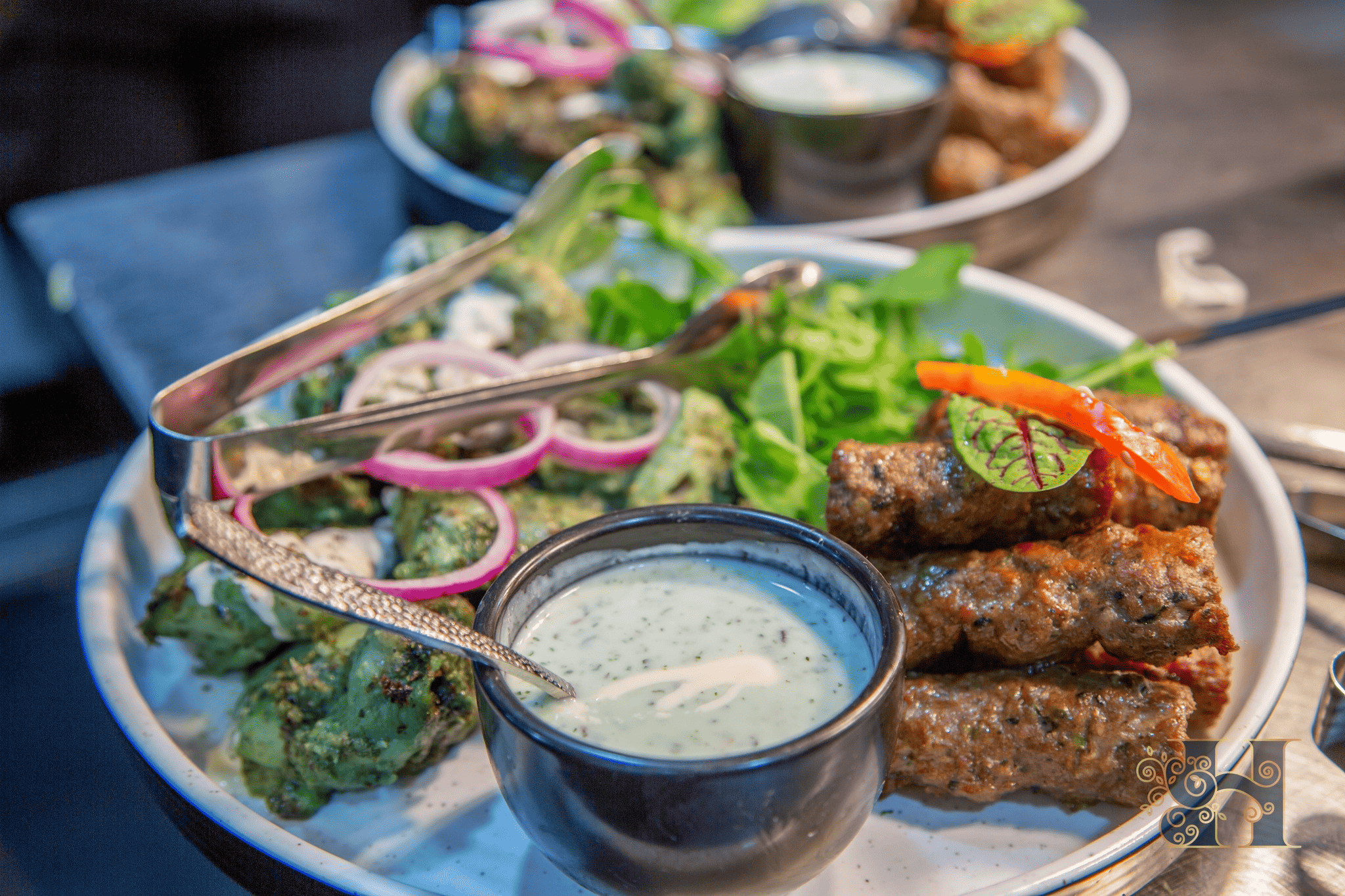
Flavourful side dishes like Raita, Chutneys, and Salads are indispensable to enrich your Iftar menu. These dishes not only complement the main courses but also add variety to the meal, ensuring a well-rounded dining experience.
Raita, made with yogurt and various ingredients like cucumber or mint, helps to balance the heat of the main courses. Chutneys, such as mint chutney or tamarind chutney, add a delightful burst of tangy and sweet flavours that enhance the overall taste of the meal. Lemon juice can also be used to add a refreshing tanginess to the dishes.
Salads, often made with fresh vegetables like tomatoes, cucumbers, and onions, provide a crunchy and light element to the meal. Some popular Pakistani salads served during Iftar include Channa Chaat, Fruit Chaat, and Kachumber Salad.
Together, these side dishes add variety, texture, and a refreshing element to the Iftar meal, making it truly unforgettable.
Delectable Desserts: Sheer Khurma, Jalebi, and Gajar ka Halwa
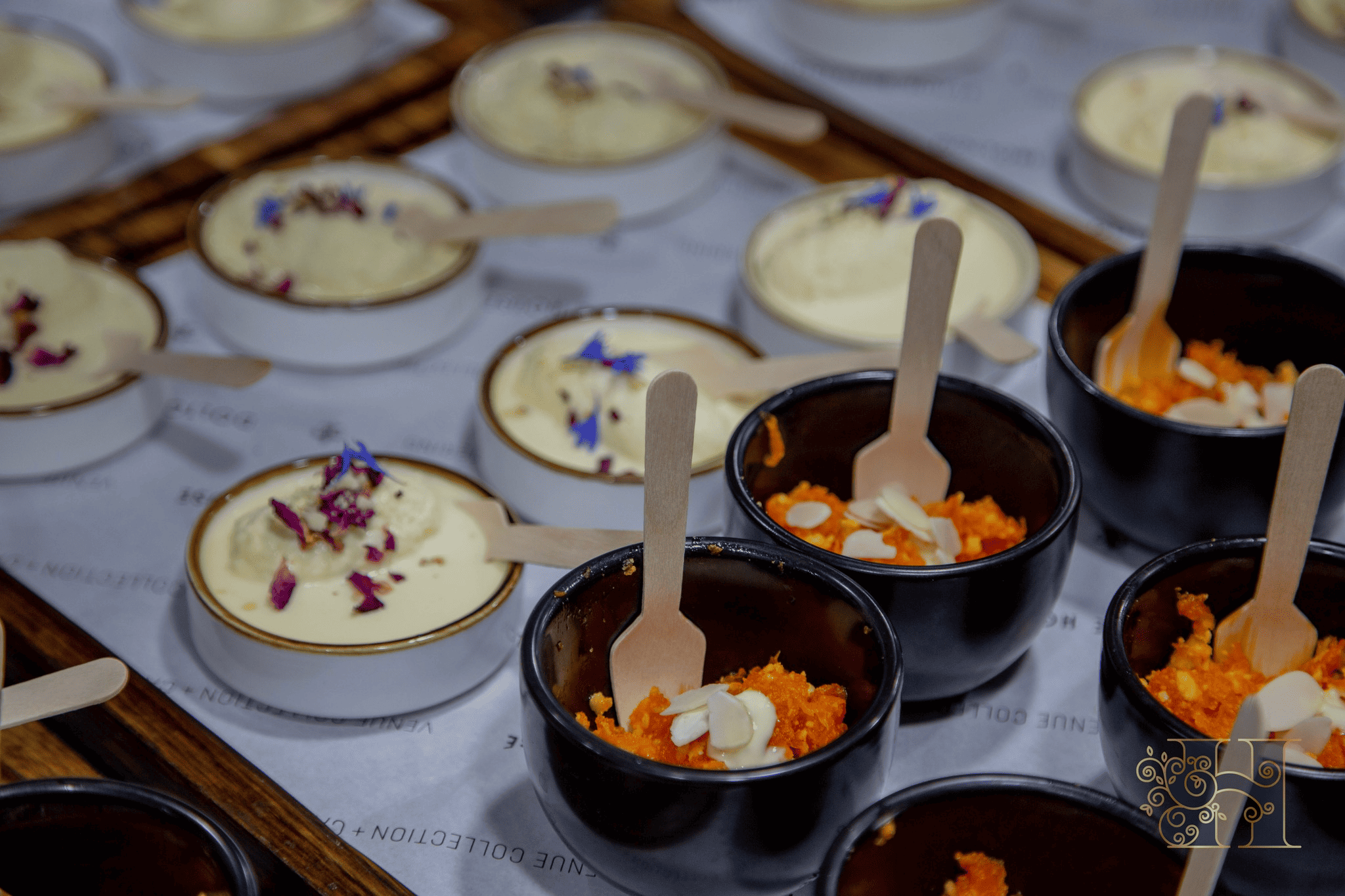
No Iftar meal is complete without the sweet indulgence of traditional Pakistani desserts. Sheer Khurma, an amazing dessert made by boiling rice with milk and sugar, is usually served at Eid, before prayer, and at festivals and weddings. Jalebi, a dessert made of little fried dough balls traditionally made from khoya, doused with simple syrup and garnished with almonds or cashews before serving, is another delightful option.
Gajar ka Halwa, a delicious carrot-based pudding made with khoya, sugar, and nuts, offers a scrumptious and satisfying end to an Iftar meal. These desserts not only cater to your sugar cravings but also impart a comforting and warm feeling, making them the ideal end to a satisfying Iftar meal.
Healthy Iftar Alternatives: Nutritious and Light Options

For a healthier approach to breaking the fast, consider incorporating nutritious and light options into your Iftar menu. Some options to consider are:
Fruit chaat: Packed with vitamins, minerals, and antioxidants, fruit chaat is high in fiber and low in calories, making it a great choice for weight loss.
Grilled kebabs: Made with lean meats like skinless chicken, fish, and lean cuts of beef, grilled kebabs are a delicious and healthier alternative to deep-fried snacks.
Lentil soups: Lentil soups are a nutritious and filling option, providing a good source of protein and fiber.
These options will help you maintain a balanced and healthy diet during Ramadan.
To make grilled kebabs flavourful yet healthy, use a combination of spices such as:
paprika
cumin
cinnamon
garlic
oregano
smoked paprika
ginger
black pepper
These healthier Iftar options not only appease your cravings but also supply the crucial nutrients and energy required after a day of fasting.
Creating Your Own Iftar Menu: Tips and Suggestions
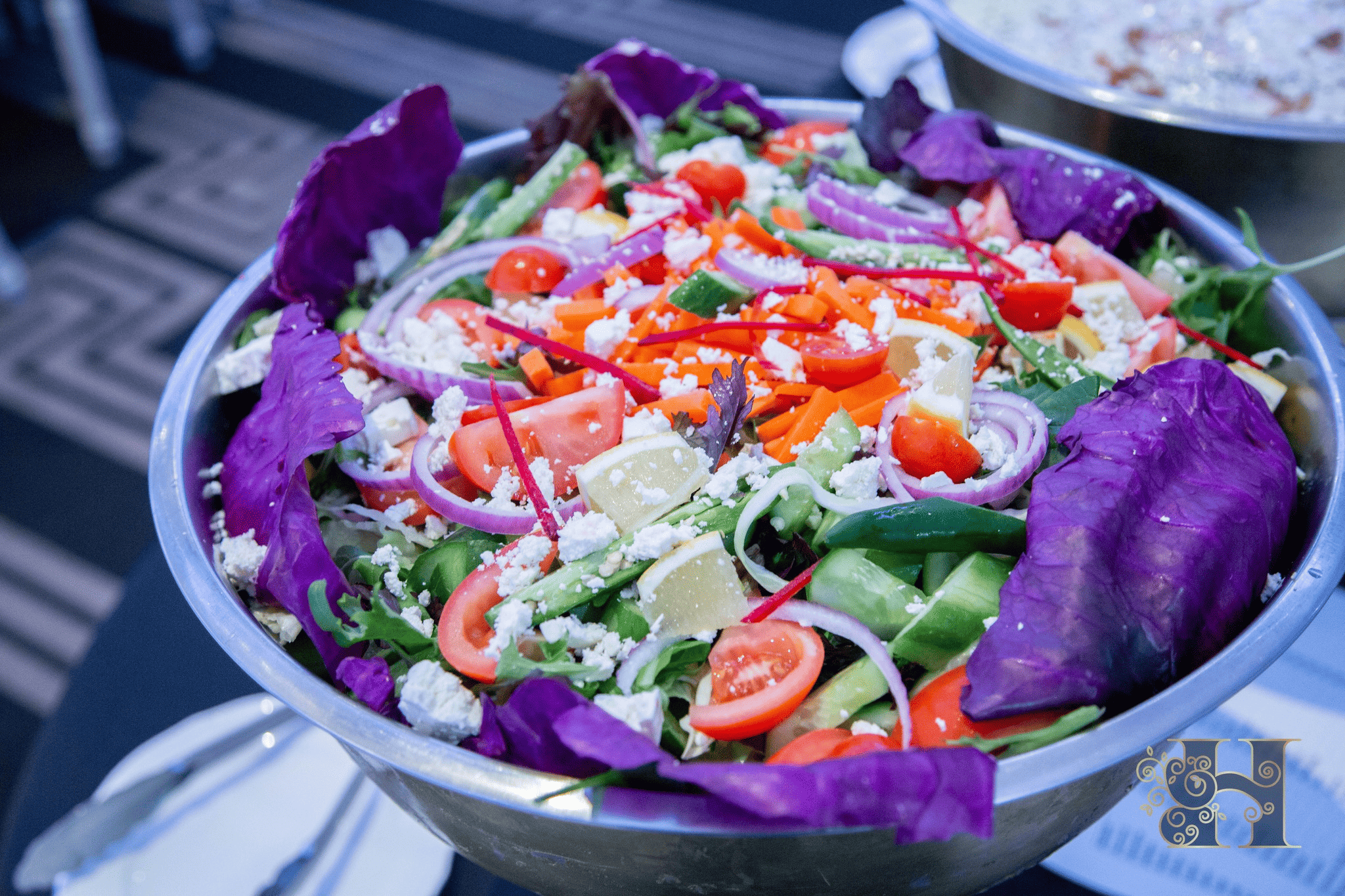
Crafting a personalized Iftar menu that caters to your taste preferences and dietary needs can be a delightful experience. To create an amazing Iftar menu, consider including a variety of protein-rich savoury dishes such as grilled chicken, lamb stew, or lentil curry, and incorporating a mix of vegetables and grains in your savoury dishes to add nutritional value and flavour.
Balance the savoury dishes with sweet options like dates, fruit salads, or traditional sweet dish desserts like sheer khurma or badam kheer, and offer a selection of condiments and sauces to enhance the flavours of both savoury and sweet dishes. Don’t forget to include refreshing beverages like lemonade or fruit-infused water to complement the meal.
The goal is to curate a diverse menu that accommodates varied tastes and preferences, guaranteeing a memorable Iftar experience for you and your loved ones.
Himalaya Restaurant in Sydney: Authentic Pakistani Iftar Experience (all you can eat buffet Dinner)
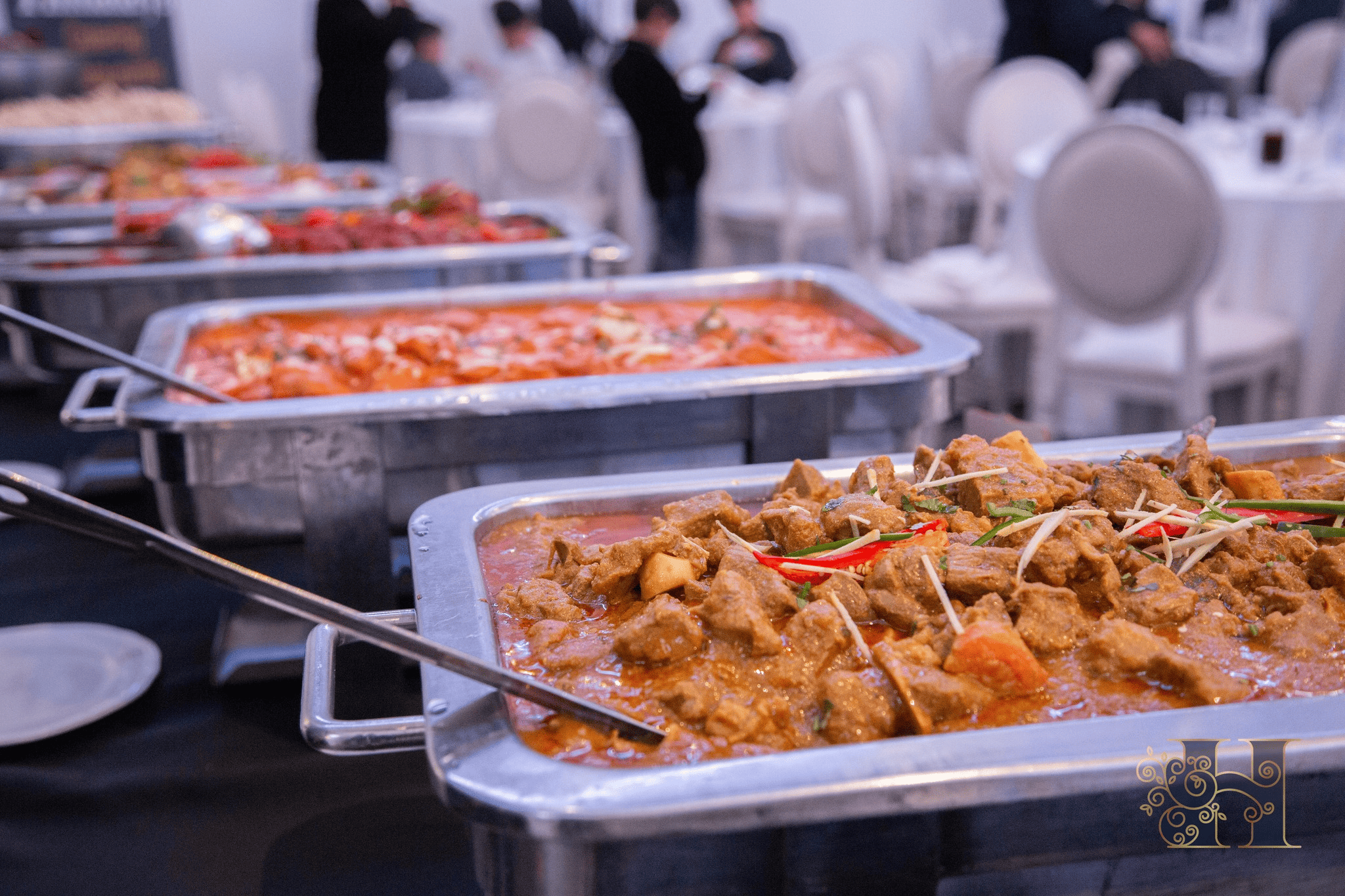
For an authentic Pakistani Iftar experience, visit Himalaya Restaurant in Sydney, located at 5 Good Street, Granville NSW 2142. This warm and inviting restaurant offers an all-you-can-eat Iftar buffet dinner, featuring a variety of traditional dishes such as:
Mix Pakora
Chaat Papdi
Chips
Chicken Wings
Butter Chicken
Tandoori Chicken
Samosas
Goat Karahi/Seekh Kebab/Achari Goat
Dates
Tandoori Chicken
The price range for the all-you-can-eat Iftar buffet at Himalaya Restaurant in Sydney is ranging from $25.00 to $35.00 per person. With comfortable seating and decor that reflects the vibrant culture and heritage of Pakistan, Himalaya Restaurant provides an unforgettable dining experience, allowing you to indulge in the rich flavours of Pakistani cuisine during Iftar.
Summary
In conclusion, the Himalaya Indian & Pakistani Restaurant stands out as a culinary gem, especially during the holy month of Ramadan. Its Iftar menu is a delightful amalgamation of tradition and flavour, proudly showcasing the rich culinary heritage of Pakistan. The menu begins with refreshing drinks and appetisers, offering a perfect start to break the day’s fast. These are followed by mouthwatering main courses, featuring both vegetarian and non-vegetarian options, that are sure to tantalise your taste buds. The main courses are not only delectable but also thoughtfully prepared to ensure they are both satisfying and nutritious.
Furthermore, the restaurant’s commitment to authenticity is evident in every dish, with chefs using traditional spices and cooking methods to bring out the best of Pakistani cuisine. The experience is then sweetly concluded with a range of scrumptious desserts, each offering a unique taste and texture, providing a delightful end to the meal.
FAQs
What are the most common foods on a Pakistani Iftar menu?
Answer: The most common foods on a Pakistani Iftar menu include bread rolls, tikka samosas, tandoori cutlets, vegetable pakoras, chicken pakoras, keema samosas, and various types of chaat and kebabs.How can you make Pakistani Iftar food at home?
Answer: To make Pakistani Iftar food at home, try traditional dishes such as rice, flat breads, lentils, vegetables, and meats, and find delicious Pakistani Ramadan recipes online for inspiration.Are there vegetarian or vegan options in a traditional Pakistani Iftar menu?
Answer: Yes, there are vegetarian and vegan options in a traditional Pakistani Iftar menu, including a variety of lentil and bean-based dishes and vegan substitutes for popular dishes like pakoras and samosas.What are the traditional Pakistani drinks often consumed during Iftar?
Answer: The traditional Pakistani drinks often consumed during Iftar include Rooh Afza, Mango Lassi and Falooda.How can I balance the Iftar menu with both savoury and sweet dishes?
Answer: To balance the Iftar menu with both savoury and sweet dishes, include a variety of protein-rich savoury dishes, vegetables and grains, and sweet options like dates, fruit salads, or traditional desserts like sheer khurma or falooda.

